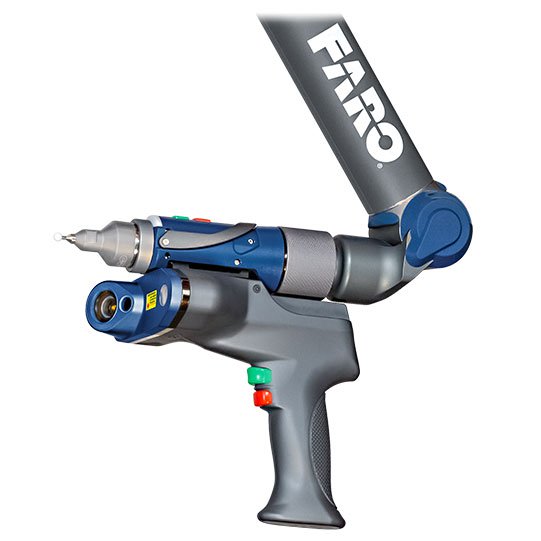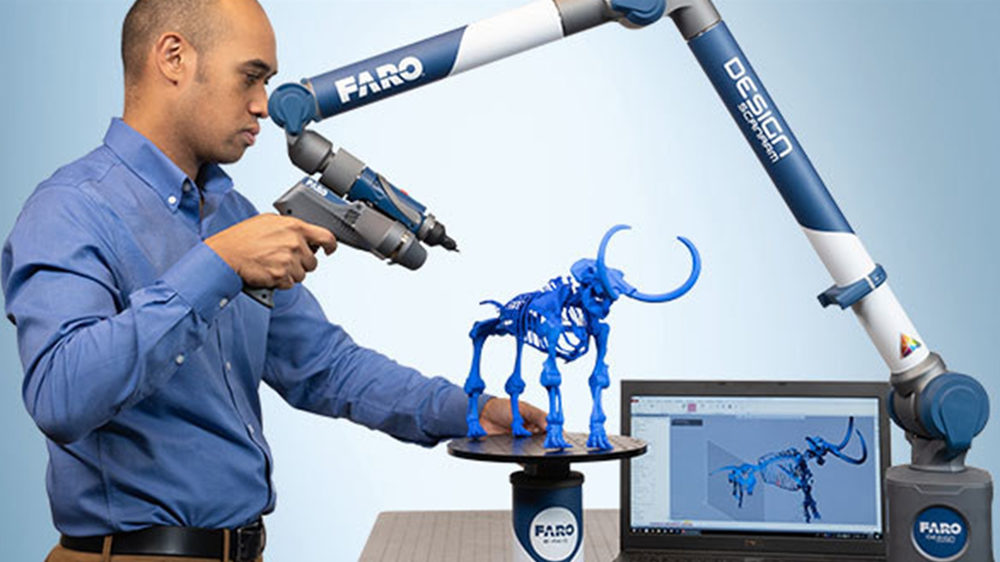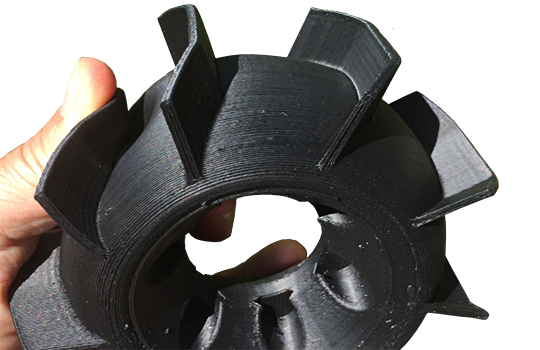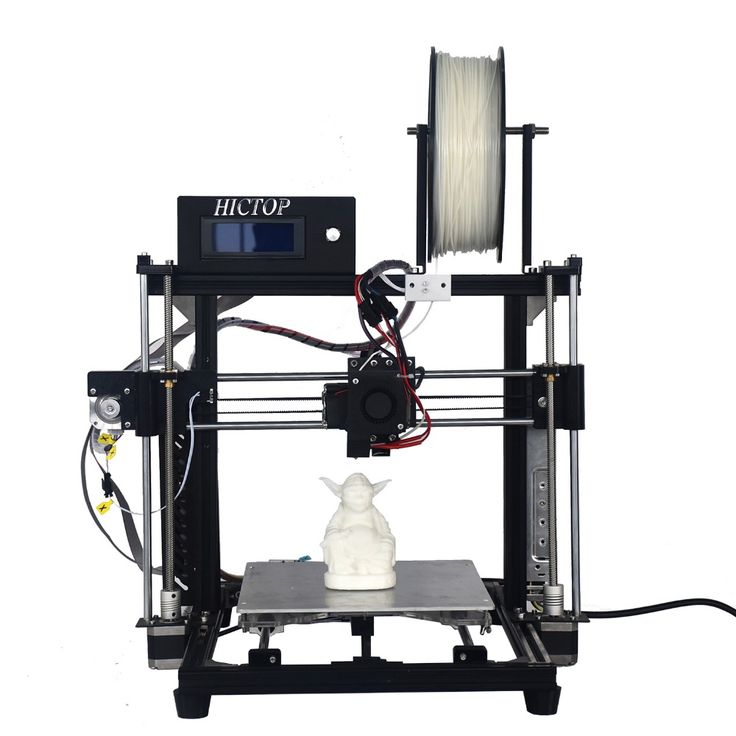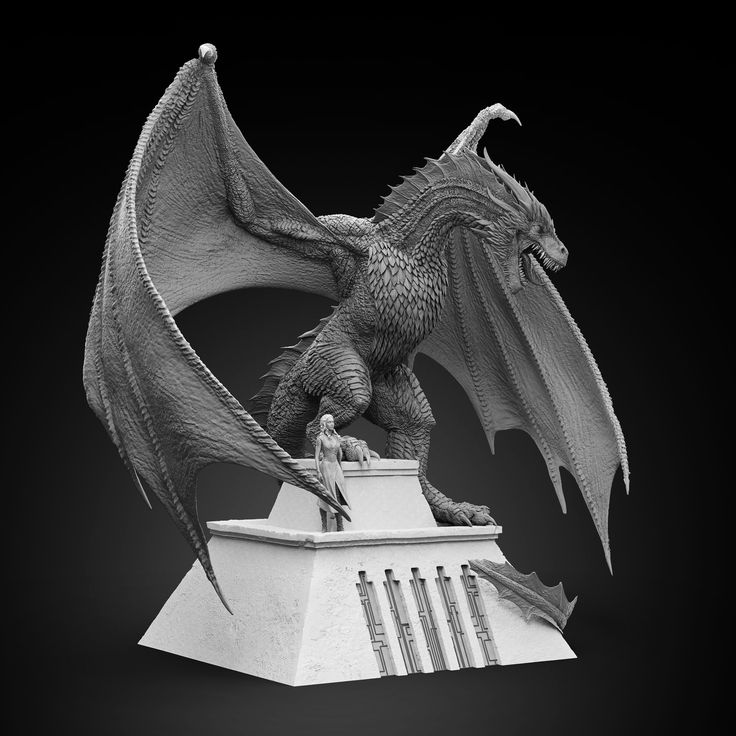Faro fusion portable arm 3d scanner
Tech sheet - FaroArm Fusion - FARO EUROPE - PDF Catalogs | Technical Documentation
Add to favorites
{{requestButtons}}
Catalog excerpts
FaroArm ® Fusion Quality Without Compromise High Performance, Great Value 15% performance improvement over its predecessor, the FaroArm Titanium. Temperature & Overload Sensors Located in each joint, they allow the arm to “feel” and react to thermal variations and improper handling for maximum accuracy. Bluetooth® Cable-Free Operation Inspect and digitise wirelessly up to 10m (30ft.) away. Internal Counterbalancing Internal counterbalancing provides comfortable stress-free usage. Multi-Probe Capability Including various ball diameters, curved and extended probes. Auto Sleep Mode Automatically turns off unit to save energy and extend component life. Universal 3.5” Quick Mount Offers ‘Mount-it-where-you-make-it’ convenience and less downtime. To make your products and processes the best in the world, there isn’t another portable CMM that combines the precision, durability, technology and cost-effectiveness of the FaroArm Fusion. Higher accuracy, yet lower cost than its predecessor the Fusion is the economical, all-in-one portable tool for performing inspections, tool certification, CAD-to-part analysis, or reverse engineering. Most Common Applications Aerospace: Alignment, tooling & mould certification, part inspection Automotive: Tool building & certification, alignment, part inspection Metal fabrication: OMI, First Article Inspection, Periodic Part Inspection Moulding/tool & die: mould and die inspection, prototype part scanning Benefits Optional 7-axes availability Infinite rotation for non-stop measuring Extended-use battery Available in four working volumes Composite material construction
FaroArm ® Fusion www.faro.com Performance Specifications Measurement Range Repeatability1 Axes 6 7 Accuracy 2 6 FaroArm Weight 7 6 7 Fusion 1.8m (6ft.) 0.036mm (0.0014in.) 0.046mm (0.0018in.) ± 0.051mm (±0.0020in.) ± 0.064mm (±0.0025in.) 9.3kg (20.5lbs.) 9.5kg (21.0lbs.) Fusion 2.4m (8ft.) 0.043mm (0.0017in.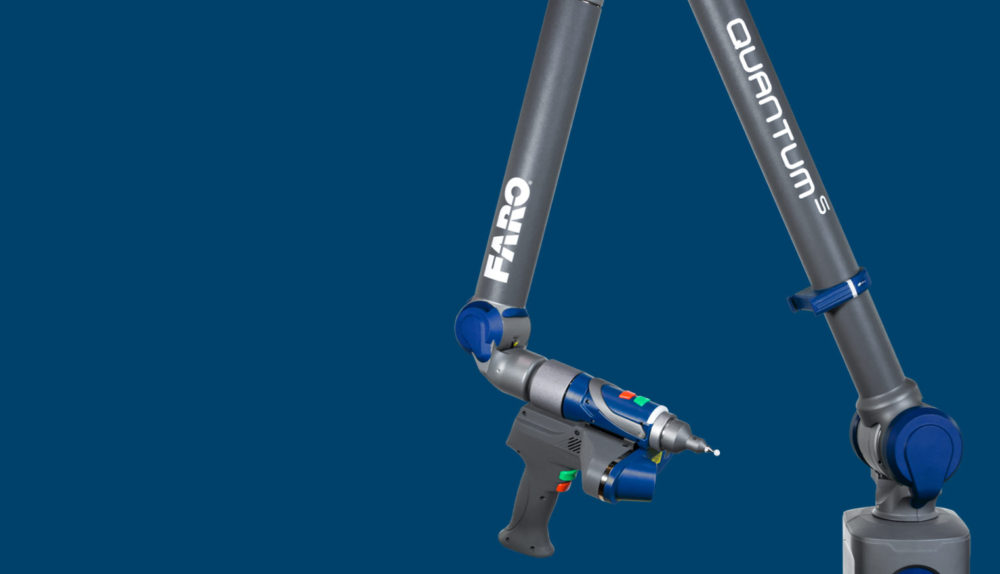 ) 0.051mm (0.0020in.) ± 0.061mm (±0.0024in.) ± 0.071mm (±0.0028in.) 9.5kg (21.0lbs.) 9.75kg (21.5lbs.) Fusion 3.0m (10ft.) 0.074mm (0.0029in.) 0.089mm (0.0035in.) ± 0.104mm (±0.0041in.) ± 0.124mm (±0.0049in.) 9.75kg (21.5lbs.) 9.98kg (22.0lbs.) Fusion 3.7m (12ft.) 0.104mm (0.0041in.)...
) 0.051mm (0.0020in.) ± 0.061mm (±0.0024in.) ± 0.071mm (±0.0028in.) 9.5kg (21.0lbs.) 9.75kg (21.5lbs.) Fusion 3.0m (10ft.) 0.074mm (0.0029in.) 0.089mm (0.0035in.) ± 0.104mm (±0.0041in.) ± 0.124mm (±0.0049in.) 9.75kg (21.5lbs.) 9.98kg (22.0lbs.) Fusion 3.7m (12ft.) 0.104mm (0.0041in.)...
All FARO EUROPE catalogs and technical brochures
-
RevEng Software
2 Pages
-
Vantage S6 & E6 Laser Trackers
2 Pages
-
CAM2 Software
2 Pages
-
Tracer SI Imaging Laser Projector
2 Pages
-
ScanPlan 2D Handheld Mapper
2 Pages
-
8-Axis Quantum S FaroArm / ScanArm V2
2 Pages
-
Focus Laser Scanner
2 Pages
-
Tech sheet SCENE
2 Pages
-
Tech Sheet - FARO Edge
2 Pages
-
Tech Sheet FARO Laser Tracker Vantage
4 Pages
-
Tech Sheet FARO Laser Scanner Focus3D X 30
2 Pages
-
FARO Laser Scanner Focus S 350
2 Pages
-
FARO Tracer M Laser Projector
2 Pages
-
FARO Forensic ScanArm
2 Pages
-
FARO Scanner Freestyle Objects
2 Pages
-
Tech Sheet FARO CAM2 Measure 10
2 Pages
-
Tech sheet - FARO SCENE WebShare Cloud
2 Pages
-
Tech sheet - FARO Laser Scanner Focus3D X 330
2 Pages
-
Tech Sheet FARO Laser Scanner Focus3D X 130
2 Pages
-
Tech sheet - FARO Scanner Freestyle 3D
2 Pages
-
Tech sheet - FARO Scanner Freestyle 3D X
2 Pages
-
Tech sheet - FARO Edge ScanArm HD
2 Pages
-
Tech sheet CAM2 SmartInspect
2 Pages
-
Tech sheet - FARO Edge ScanArm ES
2 Pages
-
Tech Sheet FARO Prime
2 Pages
Compare
Remove all
Compare up to 10 products
Non Contact Inspection - Faro Arm, Faro 3D Scanner Supplier Malaysia | Non Contact Inspection - Faro Arm, Faro 3D Scanner Distributor Malaysia Non Contact Inspection - Faro Arm, Faro 3D Scanner Provider Malaysia | Non Contact Inspection
- Professional Products > Metrology > Application - Faro Metrology > Non Contact Inspection - Faro Arm, Faro 3D Scanner
Fragile, complex and free-form surfaces can be captured as a dense and detailed 3D point cloud by the FARO ScanArm and Laser Scanner, allowing users to perform non-contact, 3D inspections with ease.
Non-contact 3D scanning from FARO can digitize features such as flush and gap that are difficult to inspect with contact methods. Laser scanning for 3D documentation can be a faster method of verifying many features and dimensions and it produces a more comprehensive and easier-to-read report. For as-built documentation it is simply the best show in town.
Evotech, based in Villa Agnedo (Trento, Italy), purchased the FARO Edge measurement arm equipped with the Laser Line Probe and CAM2 Measure 10 measurement software to perform reverse engineering activities, beginning with a project dedicated to a very special motorcycle.
MOTORSPORT
Evotech, based in Villa Agnedo (Trento, Italy), purchased the FARO Edgemeasurement arm equipped with the Laser Line Probe and CAM2 Measure 10 measurement software to perform reverse engineering activities, beginning with a project dedicated to a very special motorcycle.
Evotech is a company with an international reach that manufactures special aftermarket accessories and components for sport and naked bikes. Certified engineer Matteo Tisi, the firm’s Research, Design and Production Manager, provides a brief account of the story: “When the company was founded in 2004, it began with the manufacture of standard and decidedly simple components. However, the company’s know-how has grown exponentially over the course of 10 years, and today the Evotech brand is synonymous with technology, style and quality worldwide.”
Particular attention is paid to the development of products that celebrate the concepts of design, functionality and ease of assembly. Evotech is therefore one of the points of excellenceof ‘Made in Italy’ manufacturing, and has been able to raise its technological level by investing a good percentage of its yearly profits in research and development and cutting-edge production facilities. Matteo Tisi continues: “The last step in this development process consisted of implementing a modern rapid prototyping and reverse engineering centre, which makes it possible to immediately progress from idea to product and to create and test several solutions for each new application. ”
”
This is why Evotech chose to invest last summer in a FARO Edge ScanArm, a next-generation portable seven-axis measurement arm equipped with a Laser Line Probe, used for contact and non-contact measurements: this device is the ideal solution to create a rapid interface between activities such as part/CAD comparison, 3D modelling and, of course, rapid prototyping and reverse engineering. Matteo Tisi explains the reason for this decision: “Personally, I had been familiar with FARO instruments for a few years because of my prior experience at university and at Fiat’s centro costruzioni sperimentali (experimental construction centre).
For its part, Evotech became interested in these devices following participation in specialised trade fairs. A very special project was what finally pushed us to purchase the measurement arm.” Tisi explains: “to ‘convey’ to the market our idea of performance and the dynamic nature of our products, we wanted to create a motorcycle, called the Trentino Naked 3, which would be able to achieve exceptional performance on the track.
In the guise of a naked bike, this motorcycle conceals superbike features, dynamic, excellent performance and a supercharged engine with a mechanical centrifugal compressor that is able to achieve extremely high levels of power while retaining excellent driveability on the track. This move, made for promotional purposes one year ago, has been very successful and has introduced our name to a greater number of enthusiasts and sportsmen. More recently, we planned the construction of a second special bike, this time with a greater focus on concepts such as style and design, while also keeping some surprises in store on the technological side.”
For this new endeavour, Evotech is taking inspiration from a vintage model with a modern twist,brimming with cutting-edge technology and ‘Made in Italy’ style. This is part of the reason why Evotech purchased the FARO Edge ScanArm for use in reverse engineering. “Basically,” Matteo Tisi comments, “FARO has made a great contribution by equipping us with technology that can make our ideas a reality. ” Of course, Evotech did not purchase the FARO Edge ScanArm for the special bike project only: the new measurement arm will be used by the company for other manufacturing activities, especially in reverse engineering processes. In addition, for the manufacture of items such as frame holders, plate brackets and engine case covers, the Trento-based company will be able to rely on this tool to scan the relevant items and obtain the point clouds needed to capture the sizes, overall dimensions, profiles, etc. before moving on to the actual design phase.
” Of course, Evotech did not purchase the FARO Edge ScanArm for the special bike project only: the new measurement arm will be used by the company for other manufacturing activities, especially in reverse engineering processes. In addition, for the manufacture of items such as frame holders, plate brackets and engine case covers, the Trento-based company will be able to rely on this tool to scan the relevant items and obtain the point clouds needed to capture the sizes, overall dimensions, profiles, etc. before moving on to the actual design phase.
“Every 3D scan is conducted using CAM2 Measure 10 software,” Tisi continues, “which makes our work simple, rapid and flexible, in accordance with various application requirements.” It should also be highlighted that Evotech then loads the data into the SolidWorks software to begin the design phase. The designed part is then 3D printed for the testing phase and, if it passes, production begins.
“In terms of dimension testing,” Tisi explains, “thanks to the precision and reliability of the FARO Edge ScanArm, we believe that we will soon be able to move directly from the reverse engineering phase to production, avoiding the intermediate rapid prototyping phase.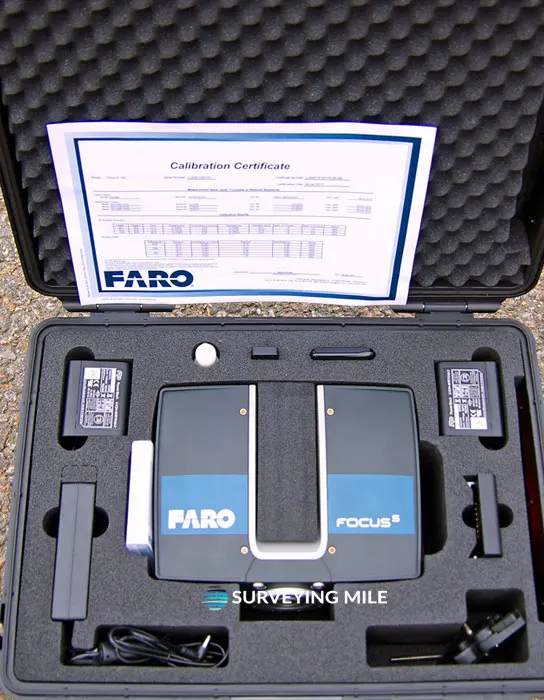 ”
”
Matteo Tisi concludes by bringing results and objectives into focus: “We have only been using the FARO Edge ScanArm with the integrated Laser Line Probe and Measure 10 software for a few months, but we can already confirm that this package fully satisfies our needs. The results are already clear: the data acquisition phase is much more exact and precise, production speed has increased and time to market has decreased. This technology is changing the way we conceive of our products and its range of applications could increase significantly.”
The University François Rabelais of Tours is working on the virtual dissection of human brain fibres in the context of a multidisciplinary research project.
The University François Rabelais of Tours is working on the virtual dissection of human brain fibres in the context of a multidisciplinary research project.
For nearly three years, several teams at the University François Rabelais of Tours have been working on a project for the virtual dissection of human brain fibres, the Fibratlas project. This multidisciplinary project combines MRI imaging researchers from the INSERM U930 unit, anatomists from the anatomy laboratory of the Faculty of Medicine at Tours and computer scientists from the computer lab at Tours (LI, EA2101). The goal is to generate "ground truth" data in order to confirm the results of algorithms reconstructing brain fibres based on MRI images (tractography).
This multidisciplinary project combines MRI imaging researchers from the INSERM U930 unit, anatomists from the anatomy laboratory of the Faculty of Medicine at Tours and computer scientists from the computer lab at Tours (LI, EA2101). The goal is to generate "ground truth" data in order to confirm the results of algorithms reconstructing brain fibres based on MRI images (tractography).
In the scope of this project, the researchers are conducting a dissection of the two hemispheres of the human brain by stages. The specimens are collected from bodies which have been donated to science. As dissection is a destructive process; it is necessary to preserve a record of each step. As a first stage, they record the results from each step in the dissection of the cerebral hemispheres using a FARO ScanArm laser scanner, and then register these results using common reference points spread on the scanned surfaces. The neuroanatomist then "replays" the dissection virtually in order to identify the visible portions of the fibre bundles at each digitized step. These portions are then used to reconstruct the entire fibre bundles being studied. The results obtained are compared to the reconstructions of the same bundles based on MRI images in order to confirm the tractography methods used in medical imaging.
These portions are then used to reconstruct the entire fibre bundles being studied. The results obtained are compared to the reconstructions of the same bundles based on MRI images in order to confirm the tractography methods used in medical imaging.
As the precision of the MRI is in the range of mm3, the research team needed a more accurate 3D measurement system in order to produce an extremely precise digital model of the dissected specimen.
The team selected the FaroArm Fusion 7-axis measuring arm and its ScanArm V2 laser digital sensor to digitize the brains in 3D during their dissection. The brain is treated so that it is firm enough not to be deformed by the dissection. It is then attached to a plate on which the reference points are scanned by the touch sensor. The laser head is then used to digitize the remainder of the sample. The arm offers an unmatched freedom of movement, such that it can be revolved around the sample in order to digitize the entire surface.
"The precision and speed of measurement of the FaroArm Fusion were decisive in terms of the selection of the portable CMM for the scientific team, as the digital sensor is capable of scanning more than 19,000 points per second," noted Mr Serres, doctoral researcher at the computer lab of the University of Tours.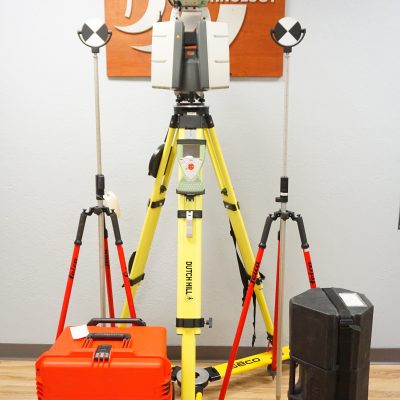 "Furthermore, its small footprint and its manoeuvrability made it extremely easy to integrate into the anatomy laboratory."
"Furthermore, its small footprint and its manoeuvrability made it extremely easy to integrate into the anatomy laboratory."
The researchers are now continuing their work in compiling the data and developing the software. The tool created will also serve both as a basis for training neurosurgeons and navigating between the different dissection steps of the brain and as a basis for research work evaluating the results given by diffusion MRI.
About the customer
U930, located at the Teaching Hospital (CHU) in Tours, is composed of 5 teams of researchers and practitioners. The main goal of the team involved in the project is one of creating and confirming imaging methods which can be used in clinical research in order to help understand the physiopathological mechanisms involved in the development and functioning of the human brain.
The LI is composed of computer science researchers, and is particularly interested in creating new methods and improving algorithms and their applications in the medical field. The Fibratlas project makes use of laboratory capacities with regard to 3D data acquisition and interactive scientific visualisation.
The Fibratlas project makes use of laboratory capacities with regard to 3D data acquisition and interactive scientific visualisation.
The company's Quality Manager, Giuseppe Ramponi, explained: “The particularity and geometric complexity of our products require highly specialized production processes and control procedures to ensure compliance with requirements and specifications.” To meet these requirements Petrolvalves has been using a FaroArm Platinum six-axis measurement arm with Measure X software (subsequently updated to CAM2 Measure 10) since 2005. “It is a sophisticated instrument that meets our needs perfectly,” Ramponi added.
Based in Castellanza, in the Province of Varese (Lombardy, Italy), Petrolvalves S.r.l. has been operating in the Oil & Gas industry for over 50 years, designing and manufacturing valves for extraction, transport, piping, refining, etc., which are used under the most diverse conditions (standard, high or low temperature, undersea, etc. ) on systems scattered throughout the world.
) on systems scattered throughout the world.
The company's Quality Manager, Giuseppe Ramponi, explained: “The particularity and geometric complexity of our products require highly specialized production processes and control procedures to ensure compliance with requirements and specifications.” To meet these requirements Petrolvalves has been using a FaroArm Platinum six-axis measurement arm with Measure X software (subsequently updated to CAM2 Measure 10) since 2005. “It is a sophisticated instrument that meets our needs perfectly,” Ramponi added.
With the production of increasingly complex and technological components, and having seen the excellent results achieved using the “old” arm, at the end of 2011 Petrolvalves decided to evaluate the purchase of a second instrument. This device would be used to solve problems related to the measurement of actuators with highly complex geometry, recently produced for undersea valves. Following detailed research and several consultations with FARO, the company chose the FARO Edge ScanArm (i. e. a FARO Edge measurement arm with a Laser Line Probe), equipped with CAM2 Q and Geomagic Qualify software.
e. a FARO Edge measurement arm with a Laser Line Probe), equipped with CAM2 Q and Geomagic Qualify software.
Ramponi: "Tests demonstrated that this was the right instrument for our specific situation since it takes fast, precise measurements of geometrically complex components such as undersea actuators, worm-screws, special shafts and grooves."
In short, the FARO Arm offers a level of precision that is comparable to fixed-coordinate measurement machines. In addition to taking up less space in the workshop, it performs inspections more efficiently and eliminates machine downtime.
In particular, FARO's new Laser Line Probe gives the FARO Edge new functionality and performance with regard to contactless measurement that would be difficult to match. In fact, the wide laser beam significantly increases scanning capacity without sacrificing precision while ensuring extremely high speed and definition. Without forgetting that it is possible to optimize measurement and scanning operations with the CAM2 Measure 10 software.![]()
Giuseppe Ramponi concluded: “We have only been using the new arm for a short time - it went into operation in January 2012, following the training course – however, we are already using it with excellent results. We have even begun measuring geometrically complex pieces and we are obtaining excellent results in terms of precision, reliability and speed.”
“Jackson Jonson Enterprise was started with the FaroArm in mind; we have custom-built the service we offer to the public around the capabilities we have gained. Because of how new we are, we haven’t so much replaced a process with the FaroArm as hit the ground running offering services not possible without the FaroArm,” says Bradley Smith, Jackson Jonson Enterprise’s General Manager.
“Jackson Jonson Enterprise was started with the FaroArm in mind; we have custom-built the service we offer to the public around the capabilities we have gained. Because of how new we are, we haven’t so much replaced a process with
Because of how new we are, we haven’t so much replaced a process with
the FaroArm as hit the ground running offering services not possible without the FaroArm,” says Bradley Smith, Jackson Jonson Enterprise’s General Manager.
Jackson Jonson Enterprise (www.jacksonjonson.com) is an independently-owned, design and fabrication company based in Austin, TX,offering product design, development and manufacturing services to a wide range of clientele including manufacturers, wholesalers, entrepreneurs and individuals. Specializing in reverse engineering, design, CAD and prototyping services, Jackson Jonson works with their clients to take any idea from the “cocktail napkin” stage to ready-for-market products.
As an integrated partner in the product development process, Jackson Jonson has expanded its capabilities over the course of the past year to include digital design, product description, precision measurement and rapid prototyping capabilities for the widest range of products possible. Using a custom tailored product development cycle consisting of four stages for each of its clients (Discovery, Feasibility, Definition,
Using a custom tailored product development cycle consisting of four stages for each of its clients (Discovery, Feasibility, Definition,
and Execution), Jackson Jonson provides assistance in all aspects of the development process from drawing, modeling, materialspecification, project research, planning and
budgeting, to patent process guidance, marketability planning, and production.
Problem
Jackson Jonson recently acquired Air Force One Performance Industries, an automotive accessory manufacturing company with several lines of air intake products. As a growing company with a focus on providing clients with the best products and designs possible, the company knew they needed to equip themselves with the latest hardware and software. They wanted a CMM solution that would ensure that product quality was up to par with their new acquisitions, as well as provide them with a flexible, easy-to-use solution for reverse engineering and modeling of existing parts.
Solution
After comparing multiple products, the decision was made to purchase the FARO Edge ScanArm. As the latest generation of the FaroArm product line, the Edge improves production, quality, and reverse engineering processes by rapidly verifying or scanning parts with confidence and accuracy. The first ever “smart arm”, the Edge features an integrated personal measurement assistant that revolutionizes portable metrology by providing stand-alone basic measurement capability through its built-in touchscreen and on-board operating system. The addition of the FARO Laser Line Probe allows Jackson Jonson to significantly increase scan coverage without sacrificing accuracy, providing exceptional speed and feature definition. “From the purchase of the product through training, and even troubleshooting simple software tasks with customer service, implementing our FARO system has been very straightforward,” says Bradley Smith, General Manager of Jackson Jonson. Primarily used for drawing mounting points and
Primarily used for drawing mounting points and
maximum tolerances in automotive applications, Jackson Jonson utilizes the FARO Edge along with CAM2 software to measure 3D spaces and objects quickly, easily and accurately. Jackson Jonson uses their Edge to measure the engine enclosures of vehicles for Air Force One Performance Industries intake products. This allows them to gather the critical dimensions in a digital format before they ever undertake a kit development. “By calculating the envelope in 3D space that we can fit our part into, the FaroArm allows us to build parts that fit the first time,” adds Mr. Smith. The portability, automatic reporting, and accuracy are key features that they rely on. Additionally, the Jackson Jonson team utilizes the Edge to measure bent stainless steel tubes that are used in the Air Force One Performance Industries’ automotive cold-air intake kits. The Edge has allowed them to quickly find the centerline bend radii on the tubes, as well as quickly model the assemblies with accurate hole placements, weld-on attachment placements, etc. As the most cost-effective solution among its competitors, the Edge provides Jackson Jonson with the versatility and flexibility they were looking for, in addition to a simple learning curve for new users. The portability of the device and the compatibility with various software platforms has helped Jackson Jonson to quickly gather precision measurements in any number of locations.
As the most cost-effective solution among its competitors, the Edge provides Jackson Jonson with the versatility and flexibility they were looking for, in addition to a simple learning curve for new users. The portability of the device and the compatibility with various software platforms has helped Jackson Jonson to quickly gather precision measurements in any number of locations.
Return on Investment
Jackson Jonson has always looked for solutions to simple problems through creative applications of materials, design techniques, and fabrication methods. By integrating the FARO Edge into their toolkit, the team has found that nearly every project they take
on starts with some use of the FaroArm. Used in applications such as dimensional analysis, CAD-based inspection, prototype inspection and comparison, alignment in machining processes, and reverse engineering, the Edge has enabled Jackson Jonson to meet their customers’ 3D measurement requirements whenever and wherever they need them.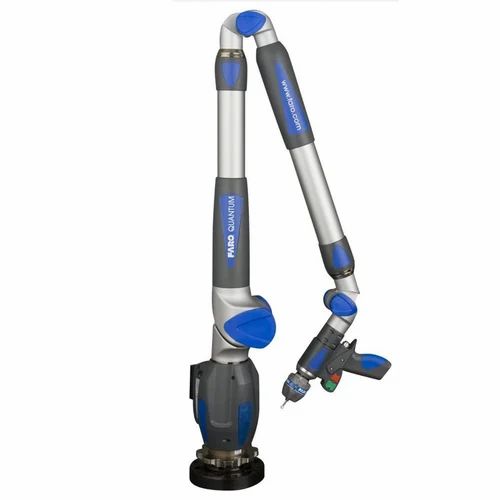 “Jackson Jonson Enterprise was started with the FaroArm in mind; we have custom-built the service we offer to the public around the capabilities we
“Jackson Jonson Enterprise was started with the FaroArm in mind; we have custom-built the service we offer to the public around the capabilities we
have gained. Because of how new we are, we haven’t so much replaced a process with the FaroArm as hit the ground running offering services not possible without the FaroArm,” says Mr. Smith.
FARO has successfully combined three tried-and-tested measuring systems in the Track ScanArm. The mobile measuring system is particularly impressive in the measurement of entire vehicles, not least as a result of its efficiency.
The FARO system is equally impressive for taking exterior as for interior measurements in Dingolfing and Regensburg.
FARO has successfully combined three tried-and-tested measuring systems in the Track ScanArm. The mobile measuring system is particularly impressive in the measurementof entire vehicles, not least as a result of its efficiency.
The BMW Group relies on the latest, stateof- the-art technologies, in particular in development and production. In this context, the Track ScanArm from FARO, which is used at the plants in Dingolfing and Regensburg (both in Germany), represents an equally clever and mobile measuring system in Geometric Integration measuring technology. What was required was a system for recording tactile points and surfaces irrespective of location, as well as wireless transfer rather than via a tool. Calibration was therefore not to be conducted by means of reference marks, as this represents an uncertainty factor, for example because of the moving parts. The objective was clearly non-contact wireless transfer – this was the basic requirement of the system to be procured. FARO’s Track ScanArm, which ideally satisfied the requirement profile, was ultimately ordered for the German plants.The Track ScanArm combines the FARO Laser Tracker, the seven-axis FaroArm Quantum with a range of 2. 4m, and the Laser Line Probe V3 scanner. The package is completed by Polyworks software. All measuring systems can be linked together by means of a common coordinate system. The coordinate system can be calibrated either by means of the laser tracker, by means of tactile measurements by the FaroArm or through scanned measurements. The coordinate system is then transferred to each of the other systems, for example from the tracker to the arm or vice versa – and thus from any vantage point. As the fixed base, the laser tracker either stands on the tripod as in Regensburg or is hung from the ceiling as in Dingolfing. The coordinate system is transferred from the fixed base of the laser tracker to the arm, irrespective of where it is located in the respective measuring environment. This means that you calibrate and can then carry out measurements – separate from the tracker and without any visual contact – of both the exterior and the interior of the vehicle, with all seven degrees of freedom.
4m, and the Laser Line Probe V3 scanner. The package is completed by Polyworks software. All measuring systems can be linked together by means of a common coordinate system. The coordinate system can be calibrated either by means of the laser tracker, by means of tactile measurements by the FaroArm or through scanned measurements. The coordinate system is then transferred to each of the other systems, for example from the tracker to the arm or vice versa – and thus from any vantage point. As the fixed base, the laser tracker either stands on the tripod as in Regensburg or is hung from the ceiling as in Dingolfing. The coordinate system is transferred from the fixed base of the laser tracker to the arm, irrespective of where it is located in the respective measuring environment. This means that you calibrate and can then carry out measurements – separate from the tracker and without any visual contact – of both the exterior and the interior of the vehicle, with all seven degrees of freedom. Tactile measurements or the scanning of surfaces are ideal for precisely those places that cannot be reached with the laser tracker. The Track ScanArm ultimately combines the advantages of the laser tracker, tactile measuring arm and laser scanner systems, supplemented by powerful software and a computer.
Tactile measurements or the scanning of surfaces are ideal for precisely those places that cannot be reached with the laser tracker. The Track ScanArm ultimately combines the advantages of the laser tracker, tactile measuring arm and laser scanner systems, supplemented by powerful software and a computer.
One key bonus of the system is the option to use all the products
that make up the Track ScanArm individually.
FARO provided a suitable partner for the implementation of this ambitious project for the two Bavarian BMW plants simply because FaroArms have already been successfully employed both in Regensburg and in Dingolfing for some ten years now. The plant in Lower Bavaria alone currently has a wide range of FaroArms from the Gold, Fusion and Platinum series. The initial presentations of the Track ScanArm were carried out as long ago as 2006. The system finally became really interesting for metrologists when FARO was also able to offer wireless vehicle network transfer. Procurement was followed by the installation phase, during which the specialists from both partners contributed their expertise. The Track Scan- Arm has been in operation as planned since mid-2009. In the end, there were several reasons that spoke in favour of the FARO system compared to that of a competitor. These included not only the price but also the fact that the quality experts at both plants were already familiar with the measuring arms and their high level of accuracy. There is also the "monopoly position" resulting from the fact that at the time FARO was the only company able to offer wireless transfer of the vehicle network.
Procurement was followed by the installation phase, during which the specialists from both partners contributed their expertise. The Track Scan- Arm has been in operation as planned since mid-2009. In the end, there were several reasons that spoke in favour of the FARO system compared to that of a competitor. These included not only the price but also the fact that the quality experts at both plants were already familiar with the measuring arms and their high level of accuracy. There is also the "monopoly position" resulting from the fact that at the time FARO was the only company able to offer wireless transfer of the vehicle network.
The range of tasks covered by geometric integration is extensive: the focus is on product qualification during the product development stage; or pilot production, in order to get the suppliers' parts up to series production standard and to ensure that the entire vehicle is ready for production. This is also followed by analysis in the series production process whenever a component cannot be fitted as required. In the course of the measurements required for testing, the Track ScanArm is regularly employed throughout the entire vehicle, on both the interior and exterior, in a very wide variety of ways. The system is furthermore used for checking production tools and jigs. Assembly jigs are currently being measured in Regensburg, so that it will be possible to restore the current status of the C-frames after retooling. In the case of these measurements, the system is particularly impressive not only for its mobility but also for perfect 'job-sharing': The measuring arm is used whenever measurements need to be taken in locations that cannot be accessed by the laser tracker. The tracker is used, on the other hand, for measuring points at heights of up 3.0m which cannot be reached with the measuring arm.
In the course of the measurements required for testing, the Track ScanArm is regularly employed throughout the entire vehicle, on both the interior and exterior, in a very wide variety of ways. The system is furthermore used for checking production tools and jigs. Assembly jigs are currently being measured in Regensburg, so that it will be possible to restore the current status of the C-frames after retooling. In the case of these measurements, the system is particularly impressive not only for its mobility but also for perfect 'job-sharing': The measuring arm is used whenever measurements need to be taken in locations that cannot be accessed by the laser tracker. The tracker is used, on the other hand, for measuring points at heights of up 3.0m which cannot be reached with the measuring arm.
The combination of tracker, tactile measuring arm and laser scanner has proven absolute stood the testing in both Dingolfing and in Regensburg. Not least because transfer can be carried out anywhere and the system offers all degrees of freedom – so that there are no limitations. The specialists at BMW have also come to appreciate the mobility of the measuring system. The Track ScanArm also plays a similarly important role for the Regensburg plant as a replacement for and a supplement to the underfloor measuring system, in order to avoid capacity bottlenecks. If the stationary measuring machine is busy, the FARO system offers the flexibility of enabling positioning the vehicle wherever there happens to be space at the moment, and the measurements can then be carried out there. In cases where the item to be inspected can only be transported into the measuring area with great difficulty, if at all, the Track ScanArm also offers the possibility of going straight to the part, for example to the production line, in order to carry out the measurements in situ. Thanks to the portability of the system, the specialists in Geometric Integration can make considerable savings in terms of transport costs and time. And when in this context the analysis is carried out more quickly, it is of course also possible to respond more quickly to any inaccuracies, which represents a significant advantage particularly in the series production process.
The specialists at BMW have also come to appreciate the mobility of the measuring system. The Track ScanArm also plays a similarly important role for the Regensburg plant as a replacement for and a supplement to the underfloor measuring system, in order to avoid capacity bottlenecks. If the stationary measuring machine is busy, the FARO system offers the flexibility of enabling positioning the vehicle wherever there happens to be space at the moment, and the measurements can then be carried out there. In cases where the item to be inspected can only be transported into the measuring area with great difficulty, if at all, the Track ScanArm also offers the possibility of going straight to the part, for example to the production line, in order to carry out the measurements in situ. Thanks to the portability of the system, the specialists in Geometric Integration can make considerable savings in terms of transport costs and time. And when in this context the analysis is carried out more quickly, it is of course also possible to respond more quickly to any inaccuracies, which represents a significant advantage particularly in the series production process. One essential bonus of this system is the option of using each of the products individuthese measurements, the system is particularly impressive not only for its mobility but also for perfect 'job-sharing': The measuring arm is used whenever measurements need to be taken in locations that cannot be accessed by the laser tracker.
One essential bonus of this system is the option of using each of the products individuthese measurements, the system is particularly impressive not only for its mobility but also for perfect 'job-sharing': The measuring arm is used whenever measurements need to be taken in locations that cannot be accessed by the laser tracker.
The tracker is used, on the other hand, for measuring points at heights of up 3.0m which cannot be reached with the measuring arm. The combination of tracker, tactile measuring arm and laser scanner has proven absolute stood the testing in both Dingolfing and in Regensburg. Not least because transfer can be carried out anywhere and the system offers all degrees of freedom – so that there are no limitations. The specialists at BMW have also come to appreciate the mobility of the measuring system.
The Track ScanArm also plays a similarly important role for the Regensburg plant as a replacement for and a supplement to the underfloor measuring system, in order to avoid capacity bottlenecks.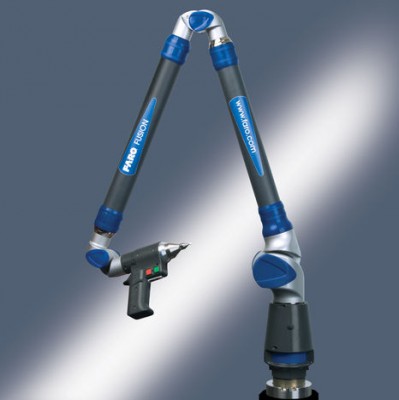 If the stationary measuring machine is busy, the FARO system offers
If the stationary measuring machine is busy, the FARO system offers
the flexibility of enabling positioning the vehicle wherever there happens to be space at
the moment, and the measurements can then be carried out there. In cases where the item to be inspected can only be transported into the measuring area with great difficulty, if at all, the Track ScanArm also offers the possibility of going straight to the part, for example to the production line, in order to carry out the measurements in situ. Thanks to the portability of the system, the specialists in Geometric Integration can make considerable savings in terms of transport costs and time. And when in this context the analysis is carried out more quickly, it is of course also possible to respond more quickly to any inaccuracies, which represents a significant advantage particularly in the series production process. One essential bonus of this system is the option of using each of the products individually – the tracker just as much as the tactile measuring arm and the laser scanner. Metrologists are already making full use of this advantage, as when the Track ScanArm is not needed at least one of the individual products is used virtually every day. The laser tracker suspended from the ceiling in Dingolfing represents an innovative solution: Any possibility of contact by a person, a machine or anything else can thus be excluded, thus achieving greater measurement precision. "The tracker can also cover several workstations as a result of its elevated position, and hence a greater measurement
Metrologists are already making full use of this advantage, as when the Track ScanArm is not needed at least one of the individual products is used virtually every day. The laser tracker suspended from the ceiling in Dingolfing represents an innovative solution: Any possibility of contact by a person, a machine or anything else can thus be excluded, thus achieving greater measurement precision. "The tracker can also cover several workstations as a result of its elevated position, and hence a greater measurement
volume. If the system is to be deployed at a different location, its mobility is still guaranteed,
because all one has to do is wind down the tracker head and pack it in the box, which might take five minutes," mstresses Matthias John, Senior Laser Tracker Account Manager
at FARO.
The Track ScanArm adds another element to the existing comprehensive array of measuring devices in Dingolfing und Regensburg, and quite considerably increases efficiency in the case of certain measuring tasks. On this basis, the metrologists can select and utilise the most effective measuring system available in each case, for any application. This also applies especially with regard to the combination of scanning and tactile measurement for large measurement volumes, and the possibility of mobile deployment on the production line.
On this basis, the metrologists can select and utilise the most effective measuring system available in each case, for any application. This also applies especially with regard to the combination of scanning and tactile measurement for large measurement volumes, and the possibility of mobile deployment on the production line.
The Track ScanArm is particularly impressive for its mobility when
measuring assembly jigs.
Roland Schlüßl, Key Account Manager at FARO and responsible for BMW client support, sums it up as follows: "The experts in Geometric Integration measuring technology at BMW are quite satisfied with the Track ScanArm system. And it's no wonder, as the automotive industry is virtually predestined for the combination of these measuring systems, because the components to be measured are too large for the measuring arm, and the laser tracker can do little on its own. Admittedly, we also learned quite a lot in the course of the installation process at BMW, and we were able to develop the Track ScanArm even further in the process. Now the package is absolutely 'spot on' and is already being used by various other car manufacturers."
Admittedly, we also learned quite a lot in the course of the installation process at BMW, and we were able to develop the Track ScanArm even further in the process. Now the package is absolutely 'spot on' and is already being used by various other car manufacturers."
5 Good Reasons
... why you should consider the FARO Track ScanArm:
Combination of FaroArm and tracker: Large range, small details which are difficult to access, highest precision
Benefit from the high accuracy of both individual systems
While measuring with the arm it is not necessary to be in line of sight with the tracker. Thus you measure/ scan with real 6/7 free axes
Only one laptop necessary for the control of both products
Laser Tracker and ScanArm can also be used indivuaally
Add to cart
- Category: Application - Faro Metrology
- Product Code: Non Contact Inspection - Faro Arm, Faro 3D Scanner
FARO coordinate measuring machines, laser trackers, laser scanners
FARO Technologies Inc. USA. USA. OOO "GEO-NDT" supplies FARO coordinate measuring machines in Russia. FARO Technologies Inc. (Switzerland, USA) - a manufacturer of portable coordinate measuring devices of various types capable of measuring in a range of up to 160 m, was founded in 1984. FARO Technologies is headquartered in Lake Mary, Florida / USA. The European headquarters is in Korntal-Munchingen, near Stuttgart, Germany; Asian headquarters in Singapore. FARO maintains other chapters in Brazil, Canada, China, France, India, Italy, Japan, Korea, the Netherlands, Poland, Spain, Switzerland, Turkey and the UK. The main manufactured equipment is the mobile "arms" FARO Arm models Prime, Fusion and Edge, with a working area from 1.2 to 3.7 m and are used both for tasks of controlling the accuracy of manufacturing products, and for reverse engineering tasks, as well as the Faro Gage arm - a device for the control of simple geometric elements. The latest development Faro Edge is currently the smartest hand FARO has ever produced. The FARO range of equipment allows you to solve most production tasks related to precision control. However, FARO does not offer a device, but a solution to a particular task set by the client. The company's specialists support the client throughout the entire life of the equipment, and if the device is annually certified by the FARO laboratory, then a lifetime warranty is provided for it. Applications: - Aerospace: reverse engineering, certification, parts inspection. If you want to order and buy FARO mobile coordinate measuring machines, please call the numbers listed in the "contacts" section of our website. |
|
|
FARO Technologies Inc.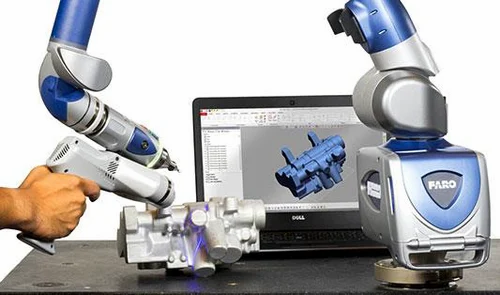 USA.
USA.
GEO-NDT LLC supplies FARO coordinate measuring machines in Russia.
FARO Technologies Inc. (Switzerland, USA) - a manufacturer of portable coordinate measuring devices of various types capable of measuring in a range of up to 160 m, was founded in 1984.
FARO Technologies is headquartered in Lake Mary, Florida / USA. The European headquarters is in Korntal-Munchingen, near Stuttgart, Germany; Asian headquarters in Singapore. FARO maintains other chapters in Brazil, Canada, China, France, India, Italy, Japan, Korea, the Netherlands, Poland, Spain, Switzerland, Turkey and the UK.
The main manufactured equipment is the mobile "arms" FARO Arm models Prime, Fusion and Edge, with a working area from 1.2 to 3.7 m and are used both for tasks of controlling the accuracy of manufacturing products, and for reverse engineering tasks, as well as the Faro Gage arm - a device for the control of simple geometric elements. The latest development Faro Edge is currently the smartest hand FARO has ever produced. Laser Tracker ION is a mobile laser-based coordinate measuring system for efficient and accurate measurement of large objects (up to 160 m), as well as for controlling the assembly and installation of large structures that cannot be done using other equipment. FARO has recently taken a big step forward in the development of laser scanning. One of the best developments is the Focus 3D laser scanner, which collects data from seven million points in less than a minute. Creates 3D images with the clarity of a digital photograph by overlaying coloration, which is an excellent tool for 3D documentation.
Laser Tracker ION is a mobile laser-based coordinate measuring system for efficient and accurate measurement of large objects (up to 160 m), as well as for controlling the assembly and installation of large structures that cannot be done using other equipment. FARO has recently taken a big step forward in the development of laser scanning. One of the best developments is the Focus 3D laser scanner, which collects data from seven million points in less than a minute. Creates 3D images with the clarity of a digital photograph by overlaying coloration, which is an excellent tool for 3D documentation.
The FARO range of equipment allows you to solve most production tasks related to precision control. However, FARO does not offer a device, but a solution to a particular task set by the client. The company's specialists support the client throughout the entire life of the equipment, and if the device is annually certified by the FARO laboratory, then a lifetime warranty is provided for it. The entire FARO business is built on three "pillars": hardware, software, service support. The software can be either FARO's own development, Delcam's or others. Any software developer or customer can obtain all the necessary libraries to connect equipment to, for example, software already used in the factory.
The entire FARO business is built on three "pillars": hardware, software, service support. The software can be either FARO's own development, Delcam's or others. Any software developer or customer can obtain all the necessary libraries to connect equipment to, for example, software already used in the factory.
Applications:
- Aerospace: reverse engineering, certification, parts inspection.
- Automotive: tool making and certification, alignment, parts inspection, reverse engineering.
- Architecture: restoration of architectural monuments.
- Heavy engineering: carrying out measurements of the object of measurement without removing it from the machine or conveyor, installation.
- Metalworking: inspection of prototype products, periodic selective control.
- Adjustment of machines and crimping: checking punching and crimping, complex machine tool building.
- Formation and production of templates: prefabricated templates, complex machine tool industry.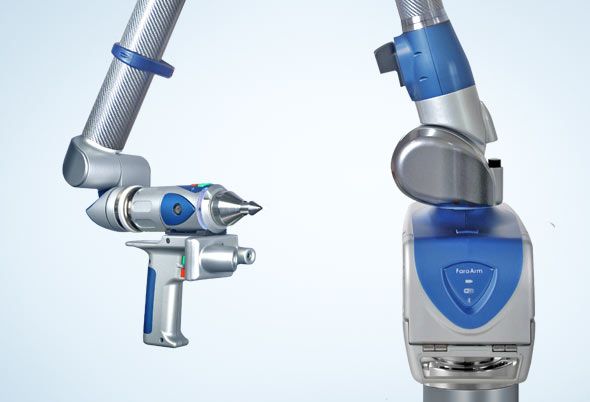
- Stamping / casting: inspection of molds, scanning of product prototypes.
If you want to order and buy FARO mobile coordinate measuring machines, please call the numbers listed in the "contacts" section of our website.
Still have questions?
Hello! My name is Chekalkin Vitaly.
I am ready to answer all your questions about FARO products. If you want to place an order or ask a question, you can contact me by phone, e-mail and through the form on the site.
Phone: +7 (495) 988-79-77 ext. 154
Mobile: +7 (929) 616-93-03
E-mail: [email protected]
Skype: vitalidze82
Total 12 products
Sorting Filters
Display All 203050
Sort by price Not selectedCheapest first Expensive first
| Quick selection | |||||
| Price range: | |||||
|
| |||||
| Device category: | |||||
| |||||
| State Register of SI: | |||||
| |||||
| Availability: | |||||
| |||||
3D scanners
FARO Laser Scanner Focus 3D
Coordinate measuring machines
CMM FARO Arm
FARO Edge 9 Coordinate Measuring Machine0010
FARO Prime Coordinate Measuring Machine
Coordinate Measuring Machine FARO Fusion
Coordinate measuring machine FARO Gage
Coordinate measuring machine FARO Laser Tracker ION
FARO Laser Tracker Vantage Coordinate Measuring Machine
FARO CAM2 software
Edge measuring machine complete with laser probe LLP ES
Laser Track Arm Portable Coordinate Measuring System
LLP V3 laser probe for FUSION ARM
Choosing a 3D Scanner for Reverse Engineering
Welcome! The topic of the new review from Top3DShop is reverse engineering or reverse engineering. Today we will introduce our readers to the technology, tell you about the rules for selecting 3D scanners. Consider paid and free programs for reverse engineering.
Today we will introduce our readers to the technology, tell you about the rules for selecting 3D scanners. Consider paid and free programs for reverse engineering.
Definition of reverse engineering
However, in most cases, access to such information is closed. In this case, reverse engineering (reverse engineering) is used. The technology is designed to create a model of a physical object based on the study of its parameters.
A 3D-scanned CAD model can be modified to improve its characteristics, such as increased productivity, longer service life. Reverse engineering is in demand in many areas: from large industrial and repair enterprises to medium and small service workshops, restyling and other areas.
Due to the active use of 3D printing, reverse engineering is becoming more and more popular. Even a user who is just starting to get acquainted with digital technologies can create a model of an object using a 3D scanner and print it on a 3D printer.
ICON restores vintage cars. In his work, he uses different models of 3D scanners to reverse engineer the necessary parts.
Source: 3dreveng.com
The process consists of three stages:
- 1: using scanning, a point cloud is obtained to create a digital copy of the object;
- 2: create a 3D model from the received information;
- 3: preparing the model for production: correcting the image, transforming it into the required format.
It is important to choose the right equipment for the user's needs. For example, to scan small museum artifacts, it makes no sense to work with a time-of-flight scanner for large-sized objects, as well as to digitize an aircraft fuselage with a high-precision handheld 3D scanner.
Using Creaform HandySCAN 700, NeoMetrix technologies performs metrological control activities and creates projects using reverse engineering technology.
How to make a new one using reverse engineering
Source: 3dcaptura.cz
1. Examine the object. We remind you that to work with reflective surfaces, you must first apply a matting agent, otherwise it will be impossible to digitize them. Apply stickers if necessary.
2. Digitize the part using the 3D scanner. Hard-to-reach areas, such as deep holes, may require additional scanning.
3. Process the received data: remove unnecessary elements, optimize the size, check the accuracy of the stitching of the surfaces.
4. Transfer the grid to the appropriate software.
5. Convert polygonal surfaces to solids. More information about creating 3D models can be found in this article.
6. If required, make changes to the completed model.
7. Make a new do based on the project using a CNC machine or print it on a 3D printer.
Creaform creates car parts using the Creaform 3D scanner and Autodesk Inventor software.
Cases
Impeller reverse engineering
Source: 3d-scantech.com
The manufacturer was faced with the task of eliminating part defects and improving the production process. The complex geometry of the impeller with many dead corners and recesses, narrow slots did not allow measurements using the CMM probe and other traditional methods. To solve the problem, a 3D laser scanner and reverse engineering technology were used.
Source: 3d-scantech.com
Digitization was performed using ScanTech PRINCE, a high-precision 3D scanner with a resolution of 20 µm, based on blue and red lasers. The device quickly switches from one mode to another, works with objects of complex geometry, does not depend on an external light source.
Source: 3d-scantech.com
As a result, an accurate model of the part was created.
Source: 3d-scantech.com
Based on the finished project, you can analyze and correct the object.
Top 3D Shop Case: Part Reconstruction with Reverse Engineering A customer's challenge for Top 3D Shop was to recreate a damaged plastic part.
The process used a RangeVision Pro 3D scanner, reverse engineering and 3D printing.
Stage 1. The size of the part determined the choice of equipment. The length of 300 mm did not allow placing an object in the chamber of a desktop device with a multi-axis platform. Medium-precision 3D scanners for working with large objects were also not suitable for solving this problem. Of the options remained high-precision hand-held scanners or optical desktop models.
Stage 2. Evaluate the geometry of the object. Difficulty level - medium, respectively, requires a scanner with an accuracy of 0.04 - 0.06 mm.
In the photo: models after restoration work.
Stage 3. It is known that the price directly depends on the functionality of the 3D scanner. Models from different manufacturers, such as Scantech, Solutionix, ZGOM, were suitable for solving the problem. Within the budget of the customer, we used the RangeVision Pro scanner, which has proven itself in working with small objects with an accuracy of 0.04 mm.
Within the budget of the customer, we used the RangeVision Pro scanner, which has proven itself in working with small objects with an accuracy of 0.04 mm.
After digitizing the part, we processed the model and prepared it for 3D printing.
Recommendations for choosing a 3D scanner for reverse engineering
First of all, the choice is influenced by the size of objects. Depending on this parameter, you should determine the type of device and scanning technology.
- For larger items larger than 10,000 mm on either side, TOF scanners are suitable. Handheld scanners based on structured illumination or lasers will not cope with the task. Also in this case, to improve the accuracy of the data, you can use photogrammetry.
- For digitizing objects in the range of 500 to 3000 mm, portable scanners are best suited: laser or optical.
- For scanning objects 100 - 500 mm, the best option is floor-standing (on a stand) or desktop laser and optical devices.
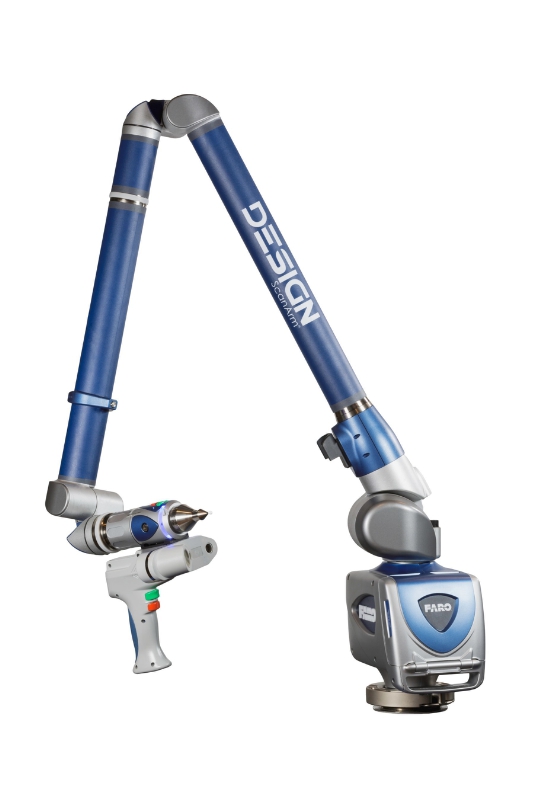 Laser models are more expensive than optical counterparts. Some mobile 3D laser scanners are suitable for fast scanning.
Laser models are more expensive than optical counterparts. Some mobile 3D laser scanners are suitable for fast scanning. - Small objects are best scanned with stationary optical instruments. They are of two types: universal and dental.
Universal devices are usually equipped with a multi-axis turntable, or the devices themselves are loosely mounted on axles. This type of device copes well with embossed surfaces.
Dental scanners are equipped with swivel platforms that can be used to mount impression stands and occluders. The devices are characterized by high resolution and accuracy.
Cases when mobile 3D laser scanners can be used to digitize small objects (from 100 to 500 mm):
- regular scan;
- it is not possible to deliver the object to the location of the stationary device;
- workstation too small for tabletop or floor standing unit;
- the surface of an object that is black or highly reflective, making it difficult to grasp with optical instruments.
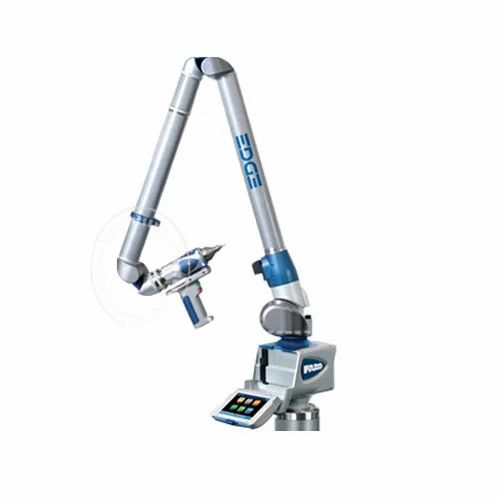
After selecting equipment depending on the size of objects, it is important to determine the accuracy, tolerances and the need for a metrological device.
This video shows an example of using a Faro Quantum ScanArm HD 3D laser scanner and a Stratasys Dimension 1200es 3D printer to reverse engineer automotive parts.
PO for creating 3D models and reverse engineering
Software for obtaining a polygonal model
9000 points and polygonal models. Some software developed for digitizing objects and reverse engineering is compatible by default with models of 3D scanners from well-known manufacturers.
The software works in the field of reverse engineering and metrological control. Allows you to create cross sections, restore and align meshes, adjust elements. The program optimizes the work of specialists working with a large amount of information.
Video above: Demonstration of Geomagic Essentials by Gregory George.
Geomagic Design X
Source: 3dsystems.com
Geomagic Design X is a professional software product designed for scanning and designing. The software creates solid models with the ability to edit. Thanks to specially developed algorithms, it is possible to design components that fit perfectly with existing parts.
Point cloud processing, surface fitting to 3D scans with high accuracy and mesh editing, as well as convenient and easy tools for using these functions, allow you to quickly optimize the 3D model received from the scanner, smooth its surfaces, fill holes and prepare it for full comparison with original.
Autodesk Meshmixer
Source: All3dp. com
com
Video footage from software developer AutoDesk.
Programs for working with solid-voltage models
SolidWorks
Source: Blog.trimech.com
Solidworks was developed for 3D modeling and reverse design. The standard set of computer-aided design functions is supplemented with tools for modeling molds, weldments and sheet metal parts. Users have access to a large library of parts and components, a lot of analytical capabilities. SOLIDWORKS is recognized as one of the most powerful 3D design software products.
Video: SolidWorks software tutorial.
Solid Edge
Source: youtu.be
Solid Edge Premium can be used free of charge for a year if the project meets certain requirements. The developer regularly updates the software, creates tutorials, offers help from experts and members of the user community.
Source: scantech.com
Reverse engineering is closely related to copyright issues. The availability of digital equipment and technology makes it possible for unauthorized access to manufacturers' projects, the development of which could have taken a huge amount of effort and investment.
Manufacturers are forced to experiment with intellectual property protection options. For example, equipping products with authentication barcodes.
In the video: digitization and reverse engineering of a car using Creaform Go!SCAN SPARK.


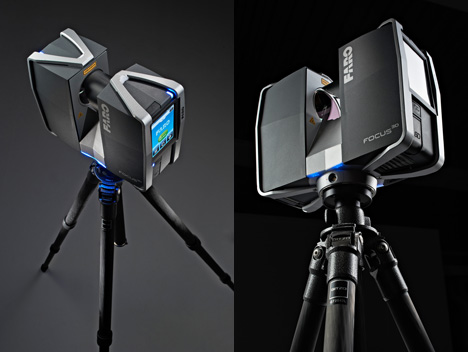 Laser Tracker ION is a mobile laser-based coordinate measuring system for efficient and accurate measurement of large objects (up to 160 m), as well as for controlling the assembly and installation of large structures that cannot be done using other equipment. FARO has recently taken a big step forward in the development of laser scanning. One of the best developments is the Focus 3D laser scanner, which collects data from seven million points in less than a minute. Creates 3D images with the clarity of a digital photograph by overlaying coloration, which is an excellent tool for 3D documentation.
Laser Tracker ION is a mobile laser-based coordinate measuring system for efficient and accurate measurement of large objects (up to 160 m), as well as for controlling the assembly and installation of large structures that cannot be done using other equipment. FARO has recently taken a big step forward in the development of laser scanning. One of the best developments is the Focus 3D laser scanner, which collects data from seven million points in less than a minute. Creates 3D images with the clarity of a digital photograph by overlaying coloration, which is an excellent tool for 3D documentation. 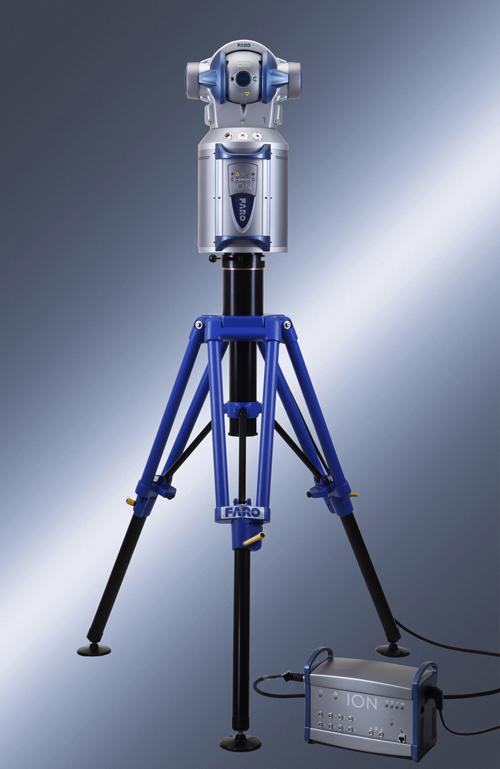 The entire FARO business is built on three "pillars": hardware, software, service support. The software can be either FARO's own development, Delcam's or others. Any software developer or customer can obtain all the necessary libraries to connect equipment to, for example, software already used in the factory.
The entire FARO business is built on three "pillars": hardware, software, service support. The software can be either FARO's own development, Delcam's or others. Any software developer or customer can obtain all the necessary libraries to connect equipment to, for example, software already used in the factory. 
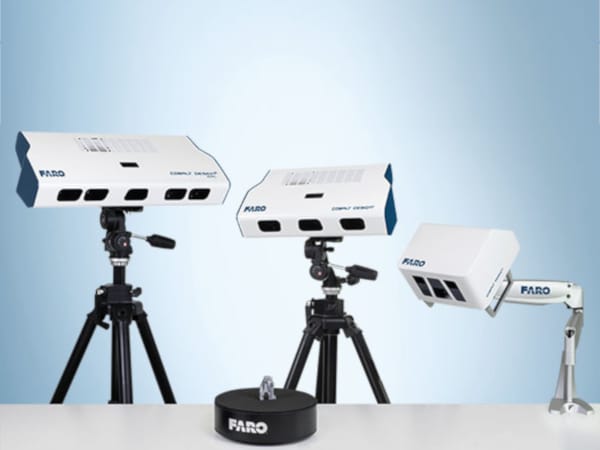 The Edge includes temperature compensation sensors as well as shear sensors. Measurement error from ± 0.034mm. The repeatability of measurements is 0.024 mm. Working area from 1800 to 3700mm.
The Edge includes temperature compensation sensors as well as shear sensors. Measurement error from ± 0.034mm. The repeatability of measurements is 0.024 mm. Working area from 1800 to 3700mm.  Measurement error from ± 0.027mm. The repeatability of measurements is 0.019 mm. Working area from 1800 to 3700mm.
Measurement error from ± 0.027mm. The repeatability of measurements is 0.019 mm. Working area from 1800 to 3700mm.  Ideal for measuring small parts, templates and assemblies. In addition to the control of standard geometric elements, measure complex curved surfaces by comparing with CAD models. A small working area (1200mm) makes it possible to install the device anywhere, for example, directly on the machine for measurements.
Ideal for measuring small parts, templates and assemblies. In addition to the control of standard geometric elements, measure complex curved surfaces by comparing with CAD models. A small working area (1200mm) makes it possible to install the device anywhere, for example, directly on the machine for measurements.  FARO ION is designed for high-precision measurement of linear and angular dimensions in the aerospace industry, shipbuilding, automotive industry, heavy engineering.
FARO ION is designed for high-precision measurement of linear and angular dimensions in the aerospace industry, shipbuilding, automotive industry, heavy engineering.  The smallest and lightest of the models in this range, which makes it easier to work and transport.
The smallest and lightest of the models in this range, which makes it easier to work and transport.  The software includes: a hint system, instructions in Russian make it possible to learn how to work on CAM2 Measure in the shortest possible time. It is possible to program the actions of the FARO CMM operator using the Learn / Execute command, which allows you to automate the process of controlling a batch of parts.
The software includes: a hint system, instructions in Russian make it possible to learn how to work on CAM2 Measure in the shortest possible time. It is possible to program the actions of the FARO CMM operator using the Learn / Execute command, which allows you to automate the process of controlling a batch of parts. 